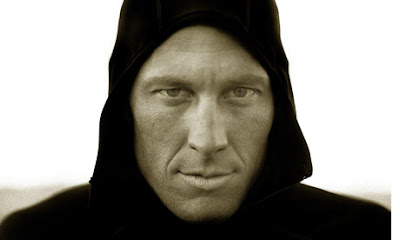
Having raced and trained for triathlons since 1985 I have had the
chance to wear all kinds of athletic gear. Over the years I have
become very picky in my garments I choose to train and race in.
I recently had the chance to do a unique workout for a company called
Lululemon. My friend asked me if I would spin in their window while
shoppers walked by and shopped inside the store. Me not wanting to
pass up on a chance to get a good workout in said "yes", and I found
myself turbo training for three hours in their window. I used one of
their Amplitude tech tees during the workout and it worked well for
the duration on my workout. I sweat a lot and its the last thing you
want happening when you are spinning on a bike. The Amplitude tech tee
did wonders for soaking up the sweat and made my three hour spin
actually nice since I was a lot dryer than I have ever been during
that kind of intense workout.


The true test came during my next workout which was a run. The
Amplitude tech tee was by far the best shirt I have ever run in. why?
Here are a few reasons.
1. the shirt fits the body extremely well. Its very form fitting, but
yet it gives your upper body room to move freely. The last thing I
like is shirts that are too small or a shirt that feels like it drags
you down.
2. there is absolutely no chaffing at all!
3. it took all the sweat from my body and right into the shirt which
made it very nice since it was cold and the last thing you want is
sweat on your body to make you colder.
4. once you clean the shirt there is no "post workout odor" remaining
in the shirt.
5. the most important reason is that it looks cool! If your not fast
you might as well look and feel good.....correct?
More Information on my new favorite workout garment
Amplitude S/S Tech Tee
* Performance top that feels as light as air
* Silverescent technology using X-STATIC the silver fiber
* Welded pocket to secure ipod nano
* Pre-shrunk
* Chafe free - flat seams
* Wicking/quick dry
* Seam free technology
Click on the title link to learn more.




































